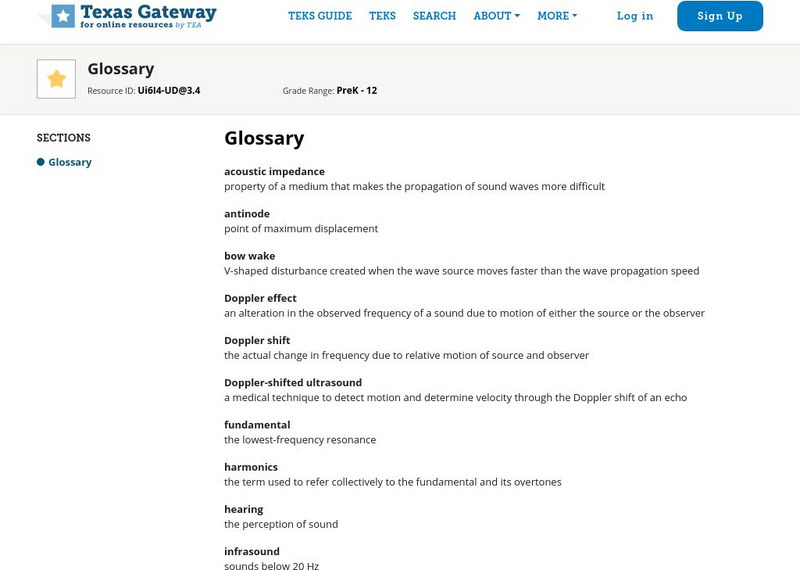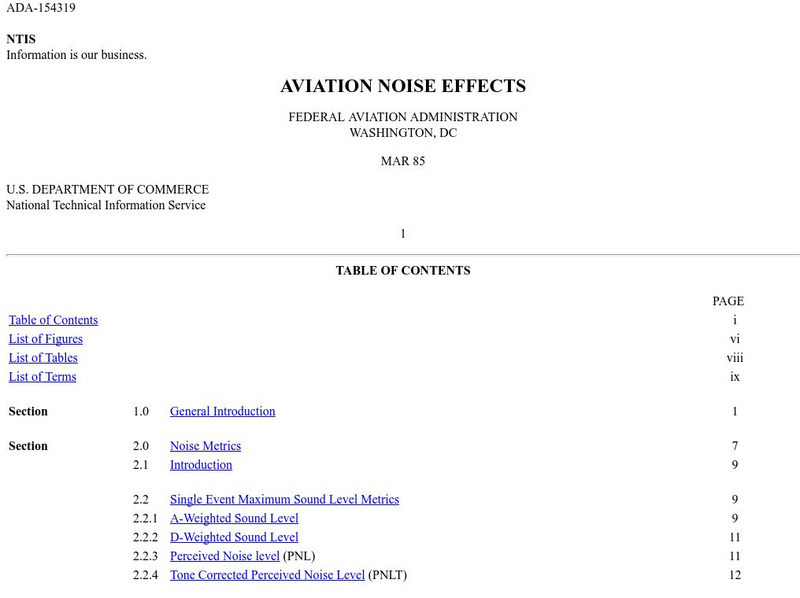OpenStax
Open Stax: Catherine Schmidt Jones: Sound and Music
Introduce some activities that introduce students to the physics of sound. They will also learn how various instruments produce sound. Included are downloadable pdf worksheets and answer sheets to use.
OpenStax
Open Stax: Catherine Schmidt Jones: Pitch Sharp, Flat and Natural Notes
Learn about the meanings and uses of pitch and accidentals. Including sharp, flat, natural and double sharps and flats, this lesson explains why they are necessary.
Other
University of Rhode Island: How Sounds Are Characterized
This resource explains how sound is characterized. It provides links to sound properties and their perception as well as properties of waves.
Dallas Symphony Orchestra
Dallas Symphony Orchestra Kids: Xylophone
The xylophone is a percussion instrument that is tuned and has a keyboard shape. Use this resource to learn more about it and the other instruments in the percussion family. Use RealAudio or Windows Media Player to hear the xylophone by...
Dallas Symphony Orchestra
Dallas Symphony Orchestra Kids: Timpani
Have you ever wondered what those big bowl shaped drums were? They are timpani. Use this resource to learn more about them and the percussion family of the orchestra. Use RealAudio or Windows Media Player to listen to the timpani play...
Dallas Symphony Orchestra
Dallas Symphony Orchestra Kids: Piccolo, Woodwind Instrument
Read about the woodwind family and how it is divided. Learn about the piccolo and how it is played. Use RealAudio or Windows Media Player to listen to the piccolo on its own and with the orchestra.
Dallas Symphony Orchestra
Dallas Symphony Orchestra Kids: Chimes
The chimes are the tall tube looking things in the orchestra. Read more about percussion instruments, the chimes in particular. Use RealAudio or Windows Media Player to listen to the chimes on their own and with the orchestra.
CK-12 Foundation
Ck 12: Physical Science: Musical Instruments
[Free Registration/Login may be required to access all resource tools.] How musical instruments make sounds, music and change pitch.
CK-12 Foundation
Ck 12: Physical Science: Frequency and Pitch of Sound
[Free Registration/Login may be required to access all resource tools.] Explores the pitch of sound, how it relates to the frequency of sound waves, and what infrasound and ultrasound are.
Other
I Was Doing All Right: Ear Trainer
An excellent online ear training tool is available at this website. Identify intervals, chords and short melodies.
South Carolina Educational Television
Etv: Nasa Online: Sound: Wave Traits
An introduction to wave traits and how they affect sound.
Other
The Basics of Reading Music
This site is an overview of how to read music. The basics of notation such as note and rest values, the names of lines and spaces of both treble and bass clefs, etc. are covered. Includes downloadable audio files.
Rock and Roll Hall of Fame
Rock & Roll Hall of Fame: Sti Lesson 11: The Cigar Box Guitar
Science instruction is most effective when using a hands-on delivery system. This lesson plan will use your young scholars' natural affinity for music and musical instruments to reinforce and refine their knowledge of the nature of sound...
Lumen Learning
Lumen: Boundless Communications: Effective Vocal Delivery
This lesson focuses on the vocal delivery of a speech including volume, rate, pitch, pauses, and articulation and pronunciation.
Discovery Education
Discovery Education: Science of Everyday Life: Everyday Science of Sound [Pdf]
In this lesson plan students experience a series of demonstrations that show how sound is made and heard. Students will experiment with sound traveling through different mediums and sound that has different pitches.
Physics Classroom
The Physics Classroom: Sound Waves and Music: Pitch and Frequency
Use this interactive physics tutorial to introduce students to the concepts of pitch and frequency in sound waves.
Texas Education Agency
Texas Gateway: Physics of Hearing: Glossary
This is a glossary of terms and definitions used in Chapter 17: Physics of Hearing from the AP Physics online text.
Integrated Publishing
Integrated Publishing/the Screw
A full and complete discussion of the simple machine called the screw, a modified inclined plane. Many examples and drawings and applications.
OpenSciEd
Open Sci Ed: Hitting the High Notes: Pitch
A simulation that shows what happens to a sound wave when the pitch is changed.
OpenSciEd
Open Sci Ed: Feeling the Sound
Feel the energy of a sound wave while adjusting the loudness and pitch.
NASA
Nasa: Beginner's Guide to Aerodynamics
Includes exhaustive information and a wealth of activities pertaining to aerodynamics and the physics of flight.
Other
Noise Pollution Clearinghouse: Aviation Noise Effects
Very comprehensive, easily indexed site on the technical, ecological, and physiological effects of aviation noise.
Other
Gcse: Sound Pitch
Informational site on sound provides waveform illustrations of sound pitch. Provides additional information on ultrasounds, waves, reflection and much more.
Alabama Learning Exchange
Alex: Multiply What You Hear!
Learners will record the sound that ten different objects make when they are dropped. The students will then use those sounds to create multiplication problems for other learners to answer.



















